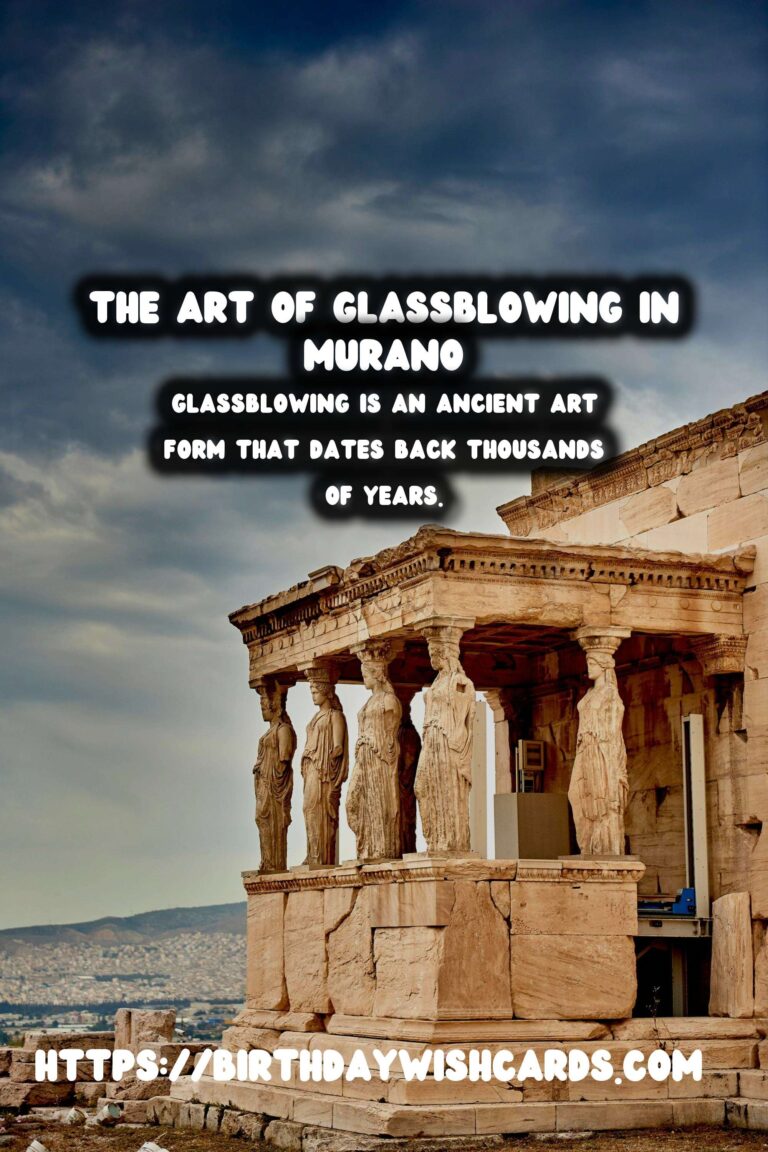
Glassblowing is an ancient art form that dates back thousands of years, evolving and expanding across different regions and cultures. One of the most significant milestones in the history of glassblowing is the establishment of Murano as a prominent glassmaking center. This article delves into the fascinating journey of glassblowing, highlighting Murano’s role in this enchanting craftsmanship.
The Origins of Glassblowing
Glassblowing is believed to have originated in the first century BC, with the discovery of the blowing iron, which allowed artisans to shape molten glass. This innovation revolutionized glass production and led to the widespread dissemination of the craft throughout the Roman Empire. Early glassblowers worked primarily in the Eastern Mediterranean regions, producing intricate glassware for various uses.
Murano: The Heart of Glassmaking
The island of Murano in Venice, Italy, emerged as a pivotal location for glassmaking around the 8th century. In 1291, due to the risk of fire, the Venetian Republic ordered glassmakers to move their furnaces to Murano, isolated from the main city. This separation allowed the Murano glassmakers to perfect their craft, becoming renowned for their exquisite and innovative designs.
The Muranese Influence
Murano’s glassmakers became famous for their expertise and unique techniques. They were responsible for the development of cristallo, a clear glass resembling rock crystal, and filigree glasswork. Murano’s thriving industry attracted artists and artisans from all over the world, cementing its reputation as a pioneering force in glassmaking history.
Expansion Beyond Murano
The influence of Murano extended far beyond its shores. As the techniques developed by Murano’s artisans spread across Europe, other centers of glass production began to emerge. Countries like France, Germany, and England adopted and adapted these techniques, creating their own unique styles and contributing to the diverse landscape of glass art.
Modern Glassblowing Techniques
Today, glassblowing continues to evolve, with contemporary artisans incorporating new technologies and materials. The craft is now a blend of traditional skills and modern innovation, producing stunning works of art that blend aesthetic beauty with technical prowess.
Conclusion: The Legacy of Glassblowing
Glassblowing has come a long way since its beginnings. Murano, with its rich history and unmatched craftsmanship, has played a vital role in the evolution of this art form. As glassblowing continues to thrive globally, the legacy of Murano remains deeply embedded in the heart of this timeless craft.
Glassblowing is an ancient art form that dates back thousands of years. Murano’s glassmakers became famous for their expertise and unique techniques.
#Glassblowing #MuranoGlass

